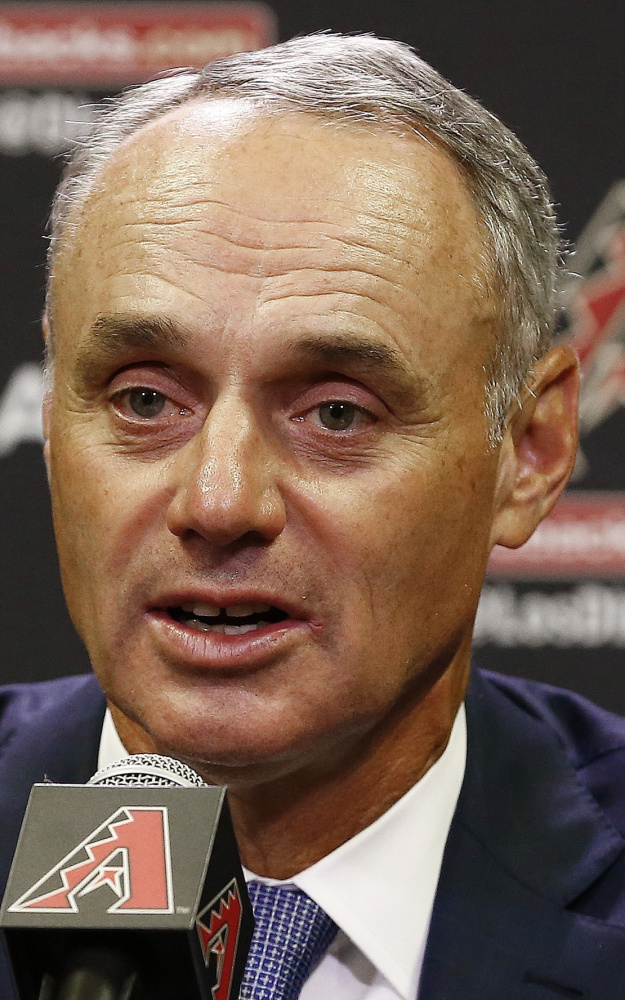MIAMI — With home runs, strikeouts and game times at record levels, Commissioner Rob Manfred says baseball is open to making changes in the sport’s rules.
Major League Baseball proposed several initiatives last offseason, including a 20-second pitch clock, a limit of one mound trip by a catcher per pitcher each inning and raising the bottom of the strike zone slightly to its pre-1996 level.
The only change the union agreed to was to allow intentional walks to be signaled without throwing pitches.
“There have been dramatic changes in the game, the way the game’s taught, the way the game is played at the big league level,” Manfred said Tuesday during a meeting with the Baseball Writers’ Association of America.
“There is a dramatically increased tolerance for strikeouts by offensive players. There’s much, much more emphasis on the home run as the principal offensive tool in the game. There’s a dramatic increase in the use of relief pitchers, even to the point of kind of a rotating bottom of the roster between Triple-A and who’s in the big leagues.”
The percentage of plate appearances resulting in home runs peaked at 2.99 percent in 2000, the height of the Steroids Era, according to data compiled by the commissioner’s office.
After sinking to 2.28 percent in 2014, it rose to 2.67 percent the following year, 3.04 percent last season and 3.30 percent this year.
The percentage of plate appearances resulting in strikeouts has increased for 12 consecutive years, from 16.4 percent in 1999 to 21.6 percent this season.
“Fans like home runs, it seems, and fans like strikeouts, it seems, and we have a lot of both,” players’ association head Tony Clark said.
Manfred agreed, but only if the strikeouts are by a dominant pitcher, such as a Clayton Kershaw.
“I think where it gets troubling from a fan perspective is tons and tons of strikeouts, no action, lots of pitching changes,” Manfred said.
The average ratio of relief pitchers to starters per game has climbed from 2.01 in 1990 to 3.15 last season. It stands at 3.10 this year at the All-Star break but rises each season after active rosters expand from 25 to 40 on Sept. 1.
“Other sports have been more aggressive about managing what’s going on on the field in terms of what their game looks like than we have been, and I’m certainly open to the idea that we should take a more aggressive posture,” Manfred said.
MLB is concerned about the increasing length of games.
Nine-inning games have averaged 3 hours, 5 minutes this season, up from an even 3 hours last year and 2:56 in 2015.
MLB has the right to impose for 2018 the proposals made last offseason that were not accepted. That, however, would be a last resort.
Send questions/comments to the editors.



Comments are no longer available on this story